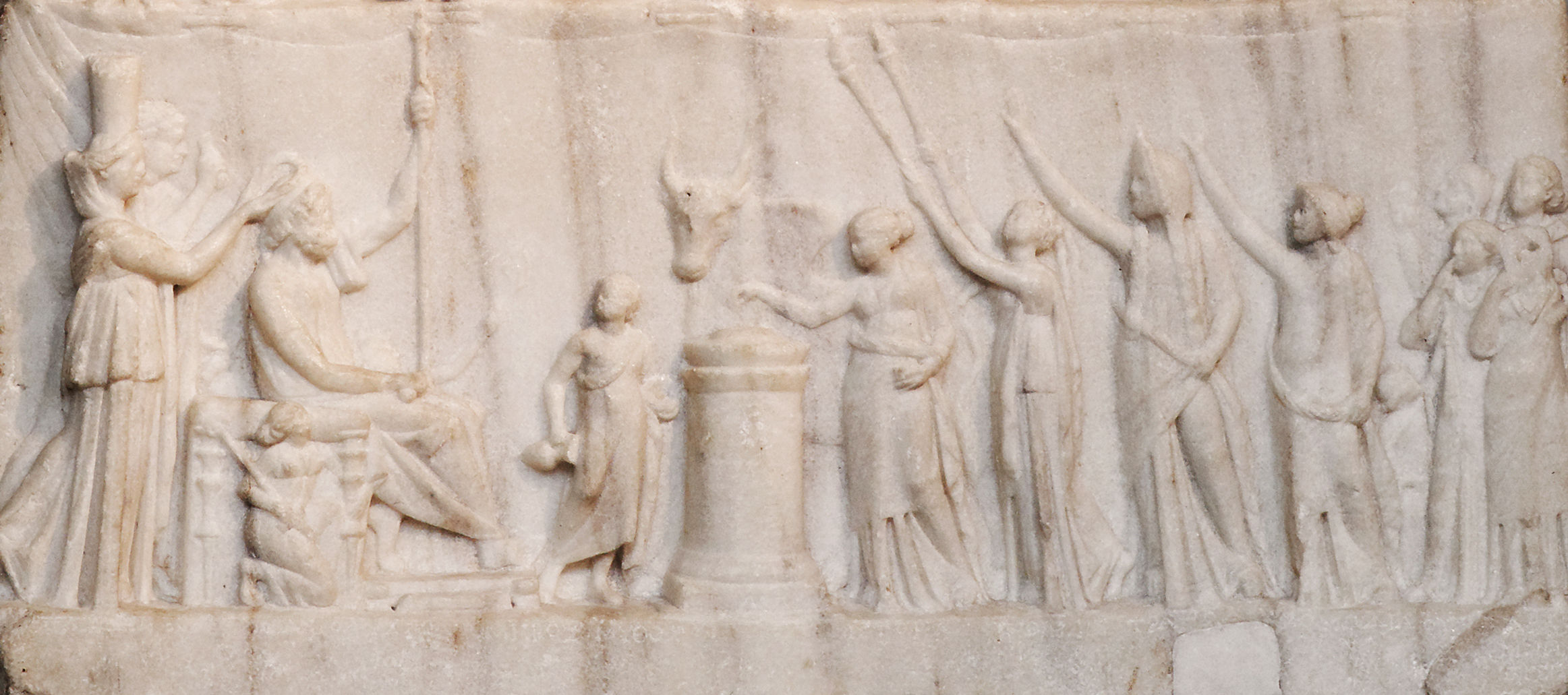
CHS Director Gregory Nagy recently participated in a panel discussion at the National Gallery of Art with researcher Gloria Ferrari Pinney (Harvard University). The focus of their talk was a bronze head currently on display at the Museum of Fine Arts in Houston.
In the context of that discussion Ferrari Pinney argued that the bronze head, which is often identified as Antigonos Doson in the guise of Poseidon, is actually a representation of the Homeric poet. She also argued that this bronze head resembles Zeus as he is depicted in a variety of coins and statues. In making this argument, Ferrari Pinney drew on evidence from the Archelaos Relief (ca. 2nd century BCE), which depicts the so-called “Apotheosis of Homer” in one scene.
In a Classical Inquiries post dated 2016.03.03, Nagy focuses on the detail of an “enthroned Homer” on the relief:
The lower zone of the relief sculpture shows an enthroned Homer receiving sacrificial offerings while the upper zone shows Zeus himself, holding a scepter. Similarly, Homer holds a scepter, which is in his left hand. Also, he holds a scroll in his right hand.
Nagy argues that this image and others like it depict Homer not only as the greatest poet of ancient Greece but also as a cult hero receiving hours after death, “Homer in such state of afterlife is not so much a god as he is a cult hero who looks like a god.” Read more on Classical Inquiries.
